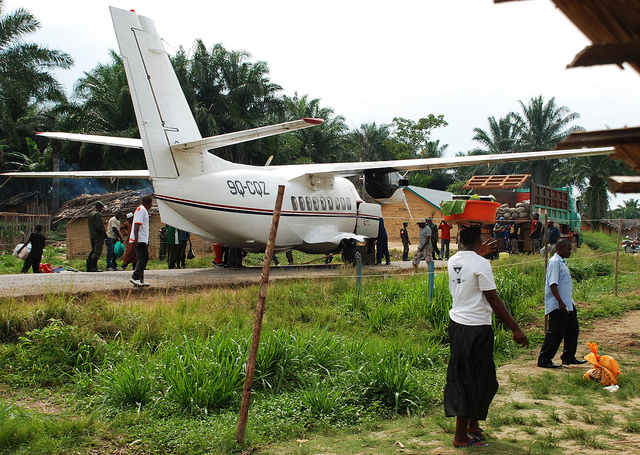
This post originally appeared on Women Under Siege.
As nightfall approached on July 30, 2010, hundreds of armed men streamed into the village of Ruvungi in eastern Congo from the nearby forests surrounding the area. At first they told the villagers they were just there for food and shelter and that their presence should cause no alarm. However, what unfolded over the next four days marked one of the worst attacks against a civilian community in Congo in the last two years.
From July 30 to August 2 the armed men from different militias wreaked havoc on the surrounding villages. When they finally left and the dust settled, the human toll of the attack slowly became clear. At first, just 24 women and girls reported being raped, but that number began to climb. In the weeks to come, the total number of victims of sexualized violence inched closer to 300, their ages spanning from 10 months to 70 years. Not a single perpetrator has been held fully accountable in court for the crimes carried out in those four days.
Ruvungi is located in the Walikale region of eastern Congo, home to several gold mines and one of the country’s largest tin mines, called Bisie. At certain points in the past few years Bisie has accounted for 70 percent of Congo’s tin production. Unsurprisingly, control of Bisie has changed hands numerous times over the years as warring rebel groups battle among themselves to exploit its wealth and control surrounding populations. In the battle for Congo’s strategic minerals reserves, it is often the communities that bear the brunt of the conflict—sometimes attacked as a demonstration of whoever is in power, sometimes punished for perceived alliances, other times intimidated into providing food or other resources. This was certainly the case in Ruvungi.
Over the past decade and a half, hundreds of thousands of women have been raped and nearly 6 million people have lost their lives in Congo due to continued conflict and instability. Millions remain displaced. What began over longstanding grievances and ethnic tensions is now violence that is also driven by the fight to control a multimillion-dollar illicit trade in conflict minerals—gold, tin, tungsten, and tantalum that are used in all electronics products. Rape is used by those who want to maintain power as a strategic weapon to destroy the social fabric of society. A population cowed by sexualized violence has little choice but to allow armed groups in Congo free reign over land—including around mines and trading routes—labor, and other resources. A tool of punishment, control, and intimidation, rape is facilitated by a culture of impunity where some of the worst offenders walk freely.
However, despite the bleakness and suffering for the communities of eastern Congo, hope remains. International and local efforts focused on reform of Congo’s mining sector, as well as a push for greater justice and accountability, has resulted in unprecedented shifts in the modus operandi.
Click to continue reading on Women Under Siege.
Photo: A plane transporting minerals from Walikale (Enough / Laura Heaton)

